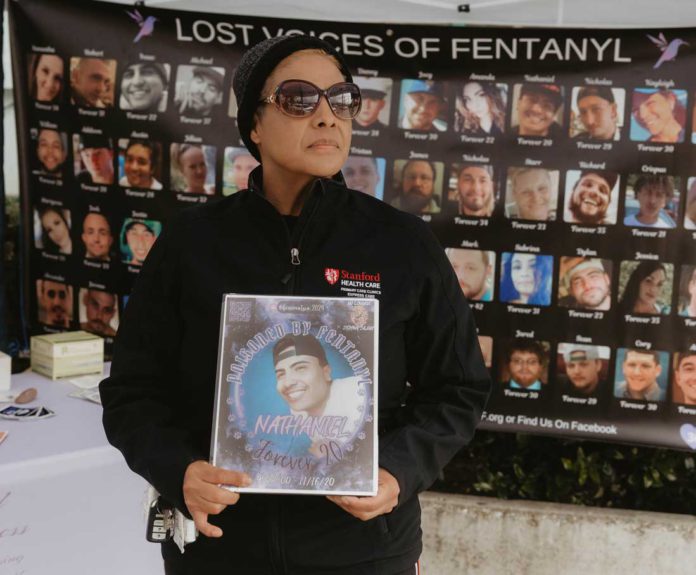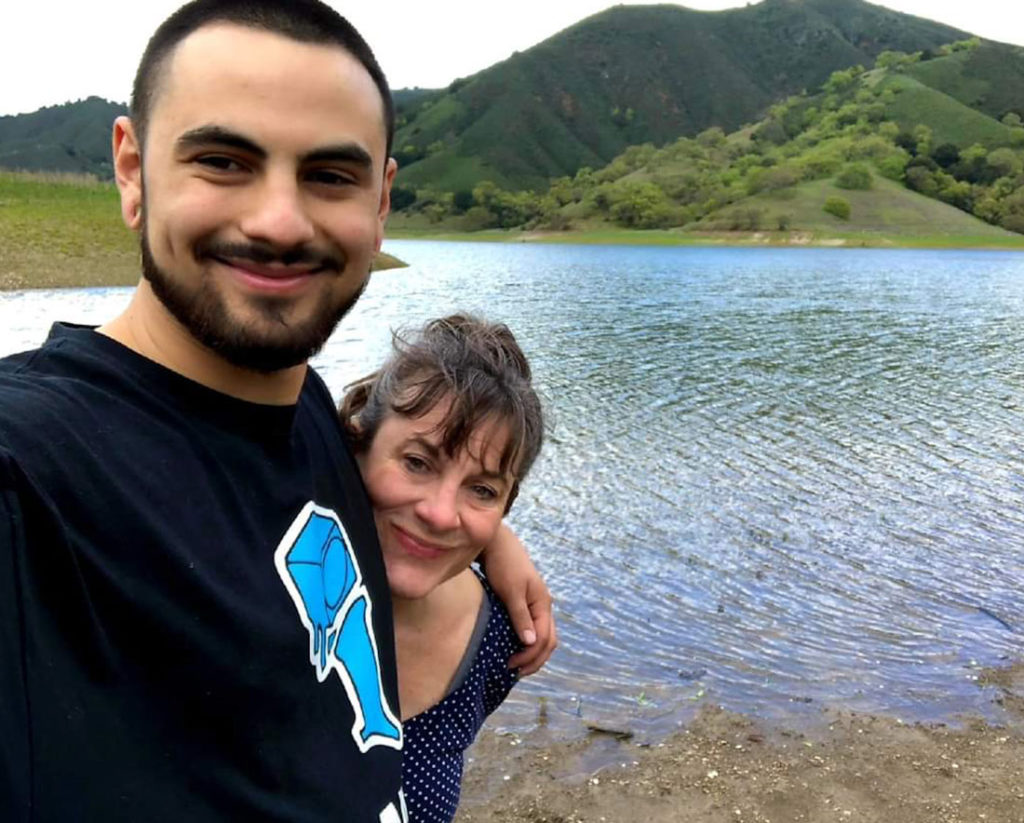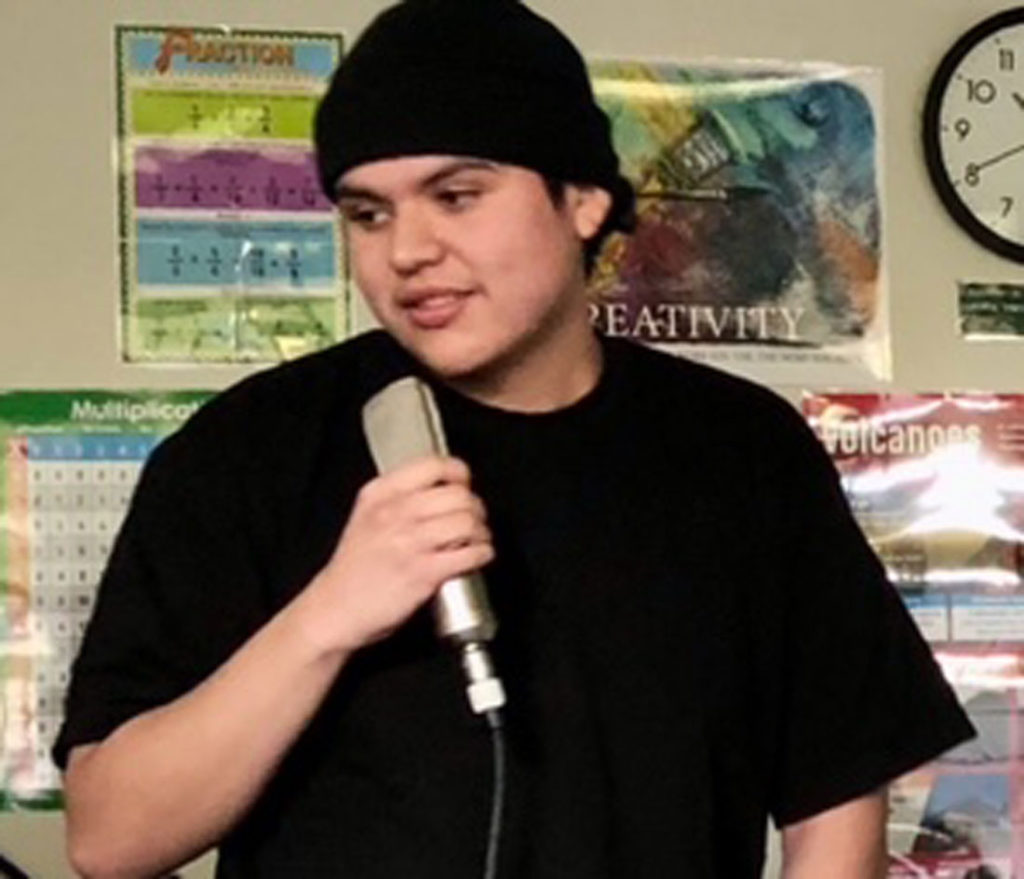
Three mothers from California’s South Valley have turned their grief into advocacy after losing their teenage sons to fentanyl-laced counterfeit pills.
Gilroy residents Geralyn Vasquez, Lisa Marquez and Stephanie Carrasco each lost sons between ages 17 and 21 to what the young men believed were legitimate prescription medications. The pills—deceptively designed to look like Xanax and Percocet—contained lethal doses of fentanyl, a synthetic opioid up to 100 times more potent than morphine, according to the mothers.
“I had never heard of fentanyl,” Vasquez said. “I will never know if he knew what was in that pill.”
Vasquez, a longtime art teacher at Stratford Middle School in San Jose, is one of three South Valley mothers who have transformed their grief into a mission to save other families from the drug that has claimed their sons’ lives.
Fentanyl is a synthetic opioid up to 50 times stronger than heroin and 100 times stronger than morphine, according to the California Department of Public Health. The drug has become a major contributor to poisonings and accidental overdoses across California and the United States, often mixed into counterfeit pills that look identical to legitimate prescription medications.
Lisa Marquez discovered the deadly reality of fentanyl when her 17-year-old son Fernando died March 26, 2020, in Gilroy. Like Vasquez’s son Jacob, Fernando was a bright, funny teenager who could pass tests without studying and loved making people laugh.
“My first thought was, oh my God, I need to tell people so this doesn’t happen to them,” Marquez said. “I need to warn these kids that these pills that they’re taking are not real.”
Her Facebook post about Fernando’s death was shared thousands of times, connecting her with other grieving parents and sparking her advocacy work that would eventually help push for Alexandra’s Law, which requires formal legal admonishment for drug dealers about the life-ending consequences of their actions.
Stephanie Carrasco, a Gilroy mother in recovery herself, lost her son Nathaniel after he purchased what he believed was a Percocet from an acquaintance. The final cause of death was fentanyl toxicity.
“Nathaniel thought he was purchasing a Percocet from this kid, and it was laced with fentanyl,” Carrasco said. “Others have stereotyped the poisonings and overdoses and think it only happens to ‘certain types of kids.’”
All three mothers emphasize that their sons don’t fit the stereotype many people have of drug users. Jacob Vasquez, who died at his family’s west Gilroy home, had complex ADHD and was seeking help for anxiety when COVID-19 made medical care difficult to access. He was artistic and athletic, loved children and animals, and had a natural charisma.
“He was just such a wonderful, gifted young man,” his mother said. “When he would walk into a room, everybody’s mood would lift.”
Fernando Marquez was intelligent and naturally funny, though shy around new people. His mother treasures memories of driving with him, their private time together in the car.

Nathaniel Carrasco was known for his kindness and acceptance of others. After his death, people came forward to share stories of his character.
“There was a transgender girl who met him at a party,” Stephanie Carrasco recalled. “She said, ‘He was so nice to us. He didn’t judge us, he didn’t treat us differently, he didn’t ask us weird questions about ourselves. He was just a really good friend.’”
The commonality among these young men reflects a broader pattern Carrasco has observed among families affected by fentanyl deaths.
“A lot of us have common factors including mental health diagnosis, learning disabilities, factors like that, where they didn’t always get the right help that they needed,” she said. “A lot of us didn’t realize that our kids were really self-medicating.”
‘No second chance’
Illicitly manufactured fentanyl appears in various forms throughout California’s drug market. As a powder, it can be mixed with heroin, cocaine, methamphetamine and other street drugs. More dangerously, it’s pressed into pills designed to look like prescription medications such as Xanax.
“The problem is, they could try it one time, and that’s it,” Vasquez said. “There is no second chance. This can kill you immediately the first time you try it.”
Jacob Vasquez’s death initially puzzled his family. When authorities found a Xanax pill in his pocket, his mother thought it didn’t make sense.
“A Xanax won’t kill somebody,” she said. “We knew he hadn’t killed himself, because why would he leave one in his pocket if that was the case?”
The family discovered the truth about counterfeit pills through Lisa Marquez’s Facebook post, which Vasquez’s daughter found while searching for answers.
“Why were we not warned?” Vasquez asked. “At that point, all these parents started reaching out to me. All who have lost their children to counterfeit pills, all who found their children dead in their beds.”
The three mothers have encountered significant challenges in their advocacy efforts, particularly regarding stigma surrounding drug use and overdose deaths.
“There’s still kind of a mindset that this isn’t going to happen to my child, this won’t affect us,” Vasquez said. “I think there’s a perception out there that it’s not going to happen to my child, (or) ‘Well, if they use drugs, that’s their fault.’”
Marquez echoes this concern about public perception and education efforts that may inadvertently downplay the danger.
“Even with Narcan being pushed out there, [survival] is not guaranteed,” she said, referring to a now widely available overdose-reversal medication. “If we’re pushing Narcan out to all these kids, well, why are we not putting the education behind it? Kids think that they could carry a box of Narcan in their backpack and they could go experiment. And that’s not okay.”

Carrasco focuses her advocacy on harm reduction and prevention, drawing from her own experience with addiction and recovery. She participates in coalitions, distributes free naloxone, and speaks at events while working full-time and managing her own ongoing grief.
“Whether it’s speaking, meeting with someone, attending an event, even if I’m just attending another event, something I could do to help,” she said. “Because I was holding all of my grief inside and it started making me sick.”
Outreach and challenges
The mothers have found mixed success in their efforts to reach young people and families. Vasquez has struggled to gain access to local schools for presentations, despite reaching out to every school in Gilroy, parent clubs and local officials.
“There’s this reluctance to have us come in as parents to try to reach those students,” Vasquez said. “I think the connection of having someone who’s lost a child to this, and seeing the grief that it has caused the families might make someone think twice about taking a pill and leaving their families devastated.”
Community events have provided meaningful opportunities to connect with families. Vasquez finds her greatest satisfaction when parents approach her after presentations to share that her message has made an impact.
“It’s when the parents personally reach out to me and let me know that I have made a difference in their life,” she said.
For Marquez, the most meaningful moments come from reaching young people directly with her son’s story.
“When I get the opportunity to speak with the kids, and to know that my son made an impact on educating them, that is my biggest joy,” she said.
The three mothers have found strength in their shared mission and mutual support. Marquez credits Vasquez as a crucial partner in her advocacy work.
“I feel like if I didn’t have Geralyn in my life, I probably wouldn’t have been able to do as much as I have,” Marquez said. “It’s just helpful when you have somebody right there as a partner, willing to encourage you.”
Their message remains consistent: fentanyl deaths can happen to any family, regardless of socioeconomic status, race or parenting approach.
“You can never say, it will never happen to my child,” Vasquez said. “If you knew the parents that I have known of every kind of family, every family dynamic, every kind of living dynamic, any kind of socioeconomic, cultural, racial. It doesn’t matter. These parents are finding their kids dead in their beds.”
As they continue their advocacy work, these three mothers carry the weight of their loss while fighting to ensure their sons’ deaths were not in vain. Their goal is simple: to spare other families from experiencing the devastating grief that has forever changed their lives.














What an extraordinary testament to the strength and resilience of women who have transformed their grief into a force for change. This story on fentanyl awareness is both heartbreaking and deeply inspiring. It’s powerful to witness how these mothers are channeling their pain into purpose—educating communities, distributing life-saving resources, and honoring their sons by sharing their stories. Their dedication is not only courageous but essential. Keep leading with love and light—we need more voices like yours in this fight. Bravo, and right on.
This is a powerful and heartbreaking piece—thank you, Calvin Nuttall, for shedding light on the human side of the fentanyl crisis. The voices of these courageous mothers deserve to be heard far and wide. Their strength, advocacy, and vulnerability are truly moving.
I’m curious—are there any upcoming school or community events planned where their message will be shared further?